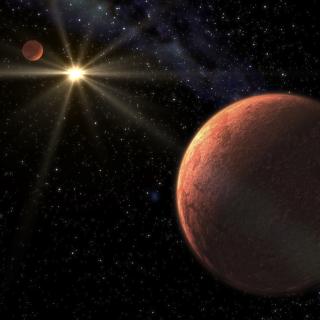Bibcode
Wilken, Tobias; Curto, Gaspare Lo; Probst, Rafael A.; Steinmetz, Tilo; Manescau, Antonio; Pasquini, Luca; González-Hernández, J. I.; Rebolo, R.; Hänsch, Theodor W.; Udem, Thomas; Holzwarth, Ronald
Referencia bibliográfica
Nature, Volume 485, Issue 7400, pp. 611-614 (2012).
Fecha de publicación:
5
2012
Revista
Número de citas
196
Número de citas referidas
163
Descripción
The best spectrographs are limited in stability by their calibration
light source. Laser frequency combs are the ideal calibrators for
astronomical spectrographs. They emit a spectrum of lines that are
equally spaced in frequency and that are as accurate and stable as the
atomic clock relative to which the comb is stabilized. Absolute
calibration provides the radial velocity of an astronomical object
relative to the observer (on Earth). For the detection of Earth-mass
exoplanets in Earth-like orbits around solar-type stars, or of cosmic
acceleration, the observable is a tiny velocity change of less than
10cms-1, where the repeatability of the calibration--the
variation in stability across observations--is important. Hitherto, only
laboratory systems or spectrograph calibrations of limited performance
have been demonstrated. Here we report the calibration of an
astronomical spectrograph with a short-term Doppler shift repeatability
of 2.5cms-1, and use it to monitor the star HD75289 and
recompute the orbit of its planet. This repeatability should make it
possible to detect Earth-like planets in the habitable zone of star or
even to measure the cosmic acceleration directly.
Proyectos relacionados

Estrellas de Baja Masa, Enanas Marrones y Planetas
Se investigan los procesos que conducen a la formación de estrellas de baja masa, enanas marrones y exoplanetas y caracterizar las propiedades físicas de estos astros en varias etapas evolutivas. Las estrellas de muy baja masa y las enanas marrones son probablemente los objetos más numerosos de nuestra Galaxia, pero no por ello están
Rafael
Rebolo López